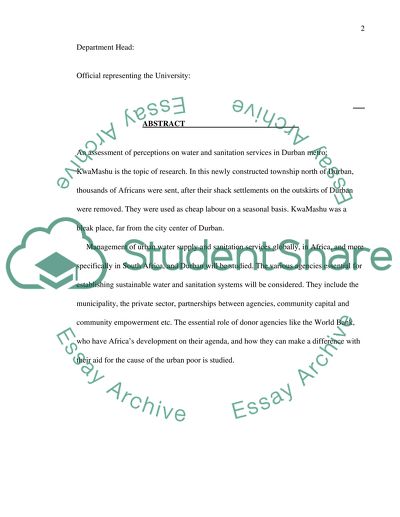Cite this document
(“RESEARCH PROPOSAL: AN ASSESSMENT OF PERCEPTIONS ON WATER AND Essay”, n.d.)
RESEARCH PROPOSAL: AN ASSESSMENT OF PERCEPTIONS ON WATER AND Essay. Retrieved from https://studentshare.org/miscellaneous/1538511-research-proposal-an-assessment-of-perceptions-on-water-and-sanitation-services-in-durban-metro-case-study-kwamashu
RESEARCH PROPOSAL: AN ASSESSMENT OF PERCEPTIONS ON WATER AND Essay. Retrieved from https://studentshare.org/miscellaneous/1538511-research-proposal-an-assessment-of-perceptions-on-water-and-sanitation-services-in-durban-metro-case-study-kwamashu
(RESEARCH PROPOSAL: AN ASSESSMENT OF PERCEPTIONS ON WATER AND Essay)
RESEARCH PROPOSAL: AN ASSESSMENT OF PERCEPTIONS ON WATER AND Essay. https://studentshare.org/miscellaneous/1538511-research-proposal-an-assessment-of-perceptions-on-water-and-sanitation-services-in-durban-metro-case-study-kwamashu.
RESEARCH PROPOSAL: AN ASSESSMENT OF PERCEPTIONS ON WATER AND Essay. https://studentshare.org/miscellaneous/1538511-research-proposal-an-assessment-of-perceptions-on-water-and-sanitation-services-in-durban-metro-case-study-kwamashu.
“RESEARCH PROPOSAL: AN ASSESSMENT OF PERCEPTIONS ON WATER AND Essay”, n.d. https://studentshare.org/miscellaneous/1538511-research-proposal-an-assessment-of-perceptions-on-water-and-sanitation-services-in-durban-metro-case-study-kwamashu.


